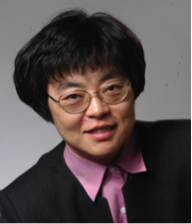
Abstract
I will discuss two main themes of research in my group addressing nano-photonics on silicon. I will discuss recent advances on nanopillar devices based on III-V compound directly grown on silicon. Monolithic integration of devices based upon dissimilar materials is believed to be of great importance to achieve functionalities greater than the sum of those of the parts. In particular, it is important to integrate active optoelectronic devices with electronic circuits and silicon-photonics. Such integration can alleviate power, speed and bandwidth bottlenecks in data transport as microprocessor performance continues to scale. I will discuss the synthesis method, material properties, device fabrication and characteristics. Optically pumped single-pillar lasers were achieved for 800nm-1550nm wavelength. We demonstrated also a photovoltaic device exhibiting insensitive to illumination angle with a conversion efficiency of 19.6%, and the first on-chip optical link constructed from InGaAs nanopillar LEDs and photodetectors directly grown on a silicon substrate.
The second topic is based on a new class of planar optics using near-wavelength structures with a large refractive index contrast with its surroundings, known as high contrast metastructures (HCM). Many extraordinary properties can be designed top-down based for integrated optics on a silicon substrate. Using a 1D and 2D HCM as a high reflectivity mirror, we demonstrated wavelength-sweptable vertical cavity surface emitting lasers (VCSELs) with 10 MHz tuning speed and continuous tuning range. Such wavelength-swept laser have applications for data communications, LIDAR and optical coherent tomography applications. A single layer HCG can also be designed as high quality-factor surface-normal resonators. I will review recent results using and its applications as biosensor, 4-wave generation, and spatial light modulator. We demonstrated a novel design that mimics the color tuning effect of chameleon skin with color change achieved simultaneously in a multiple-color pattern flat structure. In this talk, I will review the physics, experimental demonstrations and novel applications.
Biography
Connie Chang-Hasnain is Associate Dean for Strategic Alliances of College of Engineering and Whinnery Distinguished Chair Professor in EECS at the University of California, Berkeley. She has been the Founding Co-Director of Tsinghua-Berkeley Shenzhen Institute since 2015. Prior to joining the Berkeley faculty, Dr. Chang-Hasnain was a member of the technical staff at Bellcore (1987–1992) and Assistant Professor at Stanford University (1992–1995). Professor Chang-Hasnain has been honored with many awards including the UNESCO Medal For the Development of Nanoscience and Nanotechnologies (2015), IEEE David Sarnoff Award (2011), the OSA Nick Holonyak Jr. Award (2007), etc. Additionally, she has been awarded with a National Security Science and Engineering Faculty Fellowship by the US Department of Defense (2008), a Humboldt Research Award (2009), and a Guggenheim Fellowship (2009). She was the Editor-in-Chief of Journal of Lightwave Technology 2007-2012.